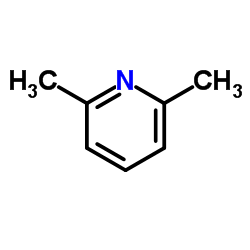Effect of base pairing on the electrochemical oxidation of guanine.
Cyrille Costentin, Viviane Hajj, Marc Robert, Jean-Michel Savéant, Cédric Tard
Index: J. Am. Chem. Soc. 132(29) , 10142-7, (2010)
Full Text: HTML
Abstract
The effect of base pairing by cytosine on the electrochemical oxidation of guanine is examined by means of cyclic voltammetry on carefully purified reactants in a solvent, CHCl(3), which strongly favors the formation of an H-bonded pair. The thermodynamics and kinetics of the oxidation reaction are not strongly influenced by the formation of the pair. They are actually similar to those of the reaction in which 2,6-lutidine, an encumbered base that cannot form a pair with guanine, replaces cytosine. The reaction does not entail a concerted proton-electron mechanism, as attested by the absence of H/D isotope effect. It rather involves the rate-determining formation of the cation radical, followed by its deprotonation and dimerization of the resulting neutral radical in competition with its further oxidation.
Related Compounds
| Structure | Name/CAS No. | Molecular Formula | Articles |
|---|---|---|---|
 |
2,6-lutidine
CAS:108-48-5 |
C7H9N |
|
High-throughput chemical modification of oligonucleotides fo...
2014-12-17 [Bioconjug. Chem. 25(12) , 2222-32, (2014)] |
|
Ambient preparation and reactions of gas phase silver cluste...
2015-07-08 [Phys. Chem. Chem. Phys. 17 , 18364-73, (2015)] |
|
Sugar composition of the pectic polysaccharides of charophyt...
2015-08-01 [Ann. Bot. 116 , 225-36, (2015)] |
|
Photolithographic Synthesis of High-Density DNA and RNA Arra...
2015-11-17 [Anal. Chem. 87 , 11420-8, (2015)] |
|
Self-assembled hybrid metal oxide base catalysts prepared by...
2015-01-01 [Nat. Commun. 6 , 8580, (2015)] |